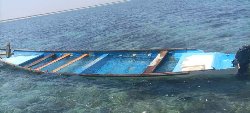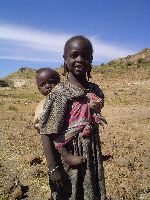Oxfam dispatches aid experts to typhoon-hit Philippines
Oxfam dispatches aid experts to super typhoon Haiyan-hit parts of the Philippines
Manila, Philippines – Oxfam has dispatched a team of experts on the ground to assess the water, public health and sanitation conditions in Bohol today and another batch of teams will go to Northern Cebu, Northern and Eastern Samar and Leyte, in the Eastern Visayas region in the Philippines, after super typhoon Haiyan (local name: Yolanda) hit the Philippines on 8 November.
“Making sure people have clean water, safe sanitation and a roof over peoples heads will be an immediate priority. These disasters compound the burden of Philippines’ poorest people. Small scale farmers and those relying on fishing to make a living will be hardest hit. Their fields and their boats and tackle will be badly damaged and they will need help not only today but in months to come,” said Marie Madamba-Nuñez of Oxfam in the Philippines.
“Economic solutions to root out poverty and inequality must be paired with minimising the risk of poor communities to the vagaries of weather and climate change,” she said
Super typhoon Haiyan is the country’s strongest typhoon for the year, and the third in its history. Yolanda has affected the 36 provinces, where initial reports place Eastern Visayas as the worst hit. According to the National Disaster Risk Reduction and Management Council (NDRRMC) as of today, 4 million people or 905,353 familes have been affected by Yolanda across the Philippines, leaving at least 100 dead. 748,572 individuals are displaced. These figures can still climb after more reports from the ground come in.
Severe damages to properties and infrastructure have been reported. Electric posts and trees have blocked roads, buildings have been wrecked, and houses, especially those of light materials, have been partially damaged or destroyed. The province of Samar remains inaccessible. This has made knowing more about and thus being able to respond to the impact and scale of the disaster more difficult.
Haiyan is projected to cost the country billions of pesos in damages to properties, infrastructure and livelihoods. Haiyan comes on the heels of a devastating earthquake and a storm that wiped out rice harvests worth millions of pesos last October this year, and a deadly standoff between the military and rebel forces that left hundreds dead and thousands homeless in September.
Haiyan’s path crossed mostly agricultural communities in Eastern Visayas, where one in every three persons is considered poor.
According to the government’s Bureau of Agricultural Statistics, Eastern Visayas is primarily an agricultural region with approximately 31% or 723,048 hectares of its total land area considered agricultural land. Agriculture, fisheries, and the forestry sector contributed 20.5% to the region’s Gross Domestic Product (GDP) and employs 19% of the region’s total population in 2011. Eastern Visayas contributed 2.56% of the country’s GDP, also in 2011.
Haiyan is threatening to overwhelm the country’s state and non-state humanitarian organizations, already stretched from responding to the previous disasters.
“We call on humanitarian players to
coordinate life-saving and relief efforts given the possible
scale of Haiyan’s impact,” said
Nuñez.
Ranked the “world’s third highest
disaster risk country” according to the United Nations
Office of the Coordination of Humanitarian Affairs
(UN-OCHA), the Philippines will continue to face multiple
and possibly simultaneously occurring emergencies because of
its high incidence of poverty and exposure to natural
hazards.
ENDS


 UN News: Ceasefire The Only Way To End Killing And Injuring Of Children In Gaza
UN News: Ceasefire The Only Way To End Killing And Injuring Of Children In Gaza ICHRP: US-Japan-Philippines Trilateral Summit Makes The Philippines A Battlefield For US-China Conflict
ICHRP: US-Japan-Philippines Trilateral Summit Makes The Philippines A Battlefield For US-China Conflict East West Center: Environmental Journalist Alexander Kaufman Receives East-West Center’s Inaugural Melvin M.S. Goo Writing Fellowship
East West Center: Environmental Journalist Alexander Kaufman Receives East-West Center’s Inaugural Melvin M.S. Goo Writing Fellowship Compassion in World Farming: Octopus Farm Must Be Stopped, Say Campaigners
Compassion in World Farming: Octopus Farm Must Be Stopped, Say Campaigners UN News: Shipwreck Tragedy Off Djibouti Coast, Drone Attacks Continue At Ukraine Nuclear Plant, Madagascar Cyclone Update
UN News: Shipwreck Tragedy Off Djibouti Coast, Drone Attacks Continue At Ukraine Nuclear Plant, Madagascar Cyclone Update UN News: Aid Lifeline Reaches Sudan's Darfur Region In Bid To Avert ‘Hunger Catastrophe’
UN News: Aid Lifeline Reaches Sudan's Darfur Region In Bid To Avert ‘Hunger Catastrophe’